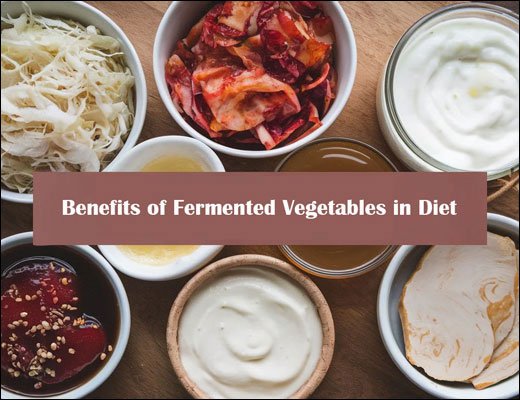Introduction: Why Your Gut Deserves More Attention
When it comes to wellness, gut health fermented foods are one of the most powerful yet overlooked ways to support your body. Your gut is home to trillions of microbes that influence digestion, immunity, and even mood, and fermented foods like sauerkraut, kefir, and kombucha can help keep this ecosystem balanced.
This bustling ecosystem of bacteria and microbes doesn’t just help digest your lunch—it’s tied to your immune strength, mental clarity, and even how often you catch a cold. And here’s the fun part: you can feed and balance this system using foods that humans have been enjoying for centuries—fermented foods.
From tangy sauerkraut to fizzy kombucha, fermentation transforms ordinary vegetables and drinks into probiotic powerhouses. In this guide, we’ll explore not just the science, but also how you can ferment foods at home with simple tools, troubleshoot common mistakes, and experiment with recipes like carrot sticks or dairy-free kefir.
Let’s dive in!
Chapter 1: The Gut – More Than Just Digestion
The Gut as Your “Second Brain”
Your gut contains trillions of microbes, many of which produce neurotransmitters such as serotonin and dopamine. That’s why scientists call the gut our “second brain.” Ever had a “gut feeling” about something? Turns out it’s more than just a saying.
Gut & Immunity
About 70% of your immune system lives in your gut. When your microbiome is balanced, it’s like having a well-trained army protecting you. When it’s off balance, though, it’s more like a confused militia that lets trouble slip in.
Signs of Gut Imbalance
- Constant bloating or indigestion
- Brain fog
- Mood swings or anxiety
- Skin flare-ups (eczema, acne)
- Frequent colds
Your gut might not text you for help, but if it did, it would sound something like: “Less fast food, more fiber, please. And maybe some sauerkraut too?”
Chapter 2: Fermentation 101 – Ancient Wisdom Meets Modern Science
What Exactly Is Fermentation?
Fermentation is a natural process where microbes (bacteria or yeast) convert sugars into acids, gases, or alcohol. This process not only preserves food but also creates probiotics that benefit your gut.
Example:
- Cabbage → Sauerkraut
- Tea → Kombucha
- Milk → Kefir or Yogurt
A Taste of History
Humans have fermented foods for thousands of years to preserve food before refrigeration. Every culture has its own superstar ferment:
- Korea → Kimchi
- Germany → Sauerkraut
- Japan → Miso & Natto
- Ethiopia → Injera (fermented flatbread)
It wasn’t just survival—it was flavor, culture, and health packed in a jar.
Chapter 3: Fermented Foods & Gut Health
Probiotics: The Gut’s Best Friends
Gut health fermented foods contain live probiotics that act like reinforcements for your gut’s ecosystem. They help crowd out harmful bacteria, strengthen your gut lining, and improve digestion.
Prebiotics vs. Probiotics
- Prebiotics: fibers that feed your good bacteria (bananas, onions, oats).
- Probiotics: live bacteria you add to your gut via fermented foods.
Together, they keep your gut happy and balanced.
Chapter 4: Fermenting at Home – The Practical Guide

Want to bring probiotics into your life without breaking the bank? Fermenting at home is easy, affordable, and fun.
How to Ferment Vegetables at Home
- Chop your vegetables (carrots, cabbage, peppers).
- Add salt (typically 2–3% of veggie weight).
- Pack tightly into a jar, leaving space at the top.
- Submerge veggies under liquid (brine).
- Add a fermenting weight and lid.
- Store at room temperature for 5–10 days.
Taste daily. Once it’s tangy enough, move to the fridge.
Best Jars for Fermenting Cabbage
For sauerkraut or kimchi, the best jars are:
- Wide-mouth glass mason jars (easy to pack veggies in).
- Fermentation crocks (traditional, great for larger batches).
- Always avoid metal lids, as salt brine can corrode them.
Pro tip: use fermenting lids that release gas but prevent air entry.
Homemade Sauerkraut Troubleshooting
- Too soft/mushy? → Salt was too low, or temperature was too high.
- Mold on top? → Likely due to exposed cabbage. Always keep veggies submerged.
- Too salty? → Rinse lightly before eating.
- Not tangy enough? → Ferment longer at room temp.
Easy Fermented Carrot Sticks Recipe
Perfect for kids and beginners!
Ingredients:
- Carrot sticks
- 1 Tbsp sea salt
- 2 cups water
Steps:
- Dissolve salt in water to make brine.
- Pack carrots into jar, cover with brine.
- Add weight and lid.
- Ferment for 4–7 days until tangy and crunchy.
Beginner Fermented Salsa Recipe
This is salsa with a probiotic punch.
Ingredients:
- 4 tomatoes, chopped
- 1 onion, diced
- 2 jalapeños, chopped
- 3 cloves garlic
- 1 Tbsp sea salt
- Cilantro, lime juice
Mix all ingredients, pack into a jar, press down, and cover with a lid. Let this gut health fermented food sit for 2–3 days at room temperature, then refrigerate to enjoy its probiotic benefits.
Fermenting Without Salt Methods
If you need a low-sodium option, you can ferment with:
- Whey (strained from yogurt).
- Starter cultures like probiotic capsules.
Salt-free ferments may not be as crunchy, but they’re still probiotic-rich.
Chapter 5: Fermented Beverages
How to Make Dairy-Free Kefir
If you’re lactose intolerant or vegan:
- Use coconut milk, oat milk, or almond milk.
- Add kefir grains.
- Cover with breathable cloth.
- Ferment 24–48 hours, strain, and refrigerate.
Result: creamy, tangy, gut-friendly kefir without dairy.
Continuous Brew Kombucha System
Instead of starting from scratch every time:
- Use a large jar with a spigot.
- Brew kombucha with tea, sugar, and SCOBY.
- Drink some, then top up with fresh tea.
This keeps kombucha flowing endlessly—like a probiotic fountain in your kitchen.
Chapter 6: Tools of the Trade
Fermenting Lids and Weights
- Lids: airlock or silicone lids keep oxygen out while releasing gas.
- Weights: glass or ceramic discs keep veggies submerged.
These little tools make fermentation fail-proof for beginners.
Chapter 7: Safety in Fermentation
“How do I know if my ferment is safe?” is the #1 beginner question.
Safe signs:
- Tangy smell (pleasantly sour).
- Bubbling or fizzing.
- Cloudy brine.
Unsafe signs:
- Strong rotten smell.
- Slimy texture.
- Mold that’s fuzzy or colorful (white film = usually harmless yeast).
Trust your nose—if it smells bad, don’t eat it.
Chapter 8: Benefits of Fermented Foods
By adding ferments to your diet, you can expect:
- Easier digestion
- Stronger immunity
- Improved nutrient absorption
- Better mood and energy
- Reduced sugar cravings
Chapter 9: The Future of Gut Health
Scientists are now studying personalized probiotics and how fermented foods might help with conditions like depression, IBS, and autoimmune issues. We may one day see custom diets based on your unique microbiome test results.
Until then, your jar of sauerkraut is already a step toward that future.
Conclusion: A Tangy Path to Better Health
Fermented foods aren’t just trendy—they’re an ancient, delicious, and affordable way to nourish your gut, boost immunity, and even support mental well-being.
With simple jars, salt, and a little patience, you can become your own probiotic chef. From sauerkraut troubleshooting to dairy-free kefir, from fizzy kombucha to fermented salsa, the world of gut health fermented foods offers endless possibilities.
So go ahead—grab a jar, chop some veggies, and start fermenting. Your gut (and your taste buds) will thank you.
❓ FAQs
Can I ferment vegetables without any special equipment
Yes! All you really need is a clean glass jar, fresh vegetables, salt, and water. Fermentation happens naturally thanks to the beneficial bacteria already present on the vegetables. While fermentation weights and special lids can make things easier, they’re optional. Beginners can start with nothing more than a jar and a spoon.
2. How do I know when my fermented vegetables are ready to eat?
The simplest test is your taste buds. Start tasting after about 3–5 days. If the flavor is lightly tangy but not strong enough for you, let it ferment longer. Most veggie ferments hit their “sweet spot” between 1–3 weeks, depending on temperature. Cooler rooms take longer, warmer rooms go faster.
3. What should I do if I see mold on top of my ferment?
If you spot fuzzy green, blue, or black mold, it’s safest to toss the batch. But don’t panic—many times, it’s just a harmless white film (kahm yeast) that can be skimmed off. The golden rule: if it looks or smells rotten, trust your instincts and don’t eat it.
4. Do fermented foods really need salt?
Salt plays three important roles: it keeps harmful bacteria at bay, it helps create the brine, and it maintains crunch. But if you need to avoid salt, you can use starter cultures (like whey from yogurt or a probiotic capsule) to kickstart fermentation. The result may be softer than salted ferments, but still probiotic-rich.
5. How long do homemade ferments last in the fridge?
Once fermentation is complete and you refrigerate your jar, the cold slows down the microbes. Most ferments will stay safe and tasty for 6–12 months if kept submerged in brine. The flavor will continue to evolve—often becoming more sour over time
Eating in sync with your body clock doesn’t just help your stomach — it also supports a calmer, more focused mind. If you want to explore more ways to care for your mental wellbeing, check out our full guide on practical tips for better mental health.
For more tips and support, visit our Facebook page.







